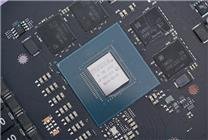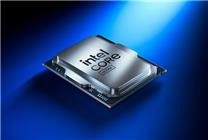Understanding the Impact of PCIe Versions on Graphics Performance
Key Takeaways
- Performance Gaps: The performance discrepancy between PCIe 4.0 and PCIe 5.0 becomes significant when video memory is insufficient.
- Graphics Memory Usage: Insufficient video memory can lead to a reliance on system memory, severely impacting performance.
- Recommendation: For optimal performance in modern gaming, avoid using 8GB graphics cards if your motherboard only supports PCIe 4.0.
Recent findings from the technology channel "Рома, Просто Рома" have sparked a renewed discussion on the performance capabilities associated with different PCIe versions. While standard benchmarks, such as those from "TechPowerUp," previously illustrated minimal differences—1% in favor of PCIe 5.0 with an RTX 5090—new tests indicate a much larger gap when video memory is limited.
The Video Memory Challenge
The RTX 5090, equipped with substantial video memory, shows negligible variations in performance between PCIe 4.0 and PCIe 5.0. However, the same cannot be said for lower-end cards like the RTX 5060, which has only 8GB of video memory. When the demands of modern games outstrip this capacity—a scenario often referred to as "exploding video memory"—the graphics card resorts to using system memory.
This can drastically affect performance. For example, in the case of “The Last of Us,” tests demonstrated that with an RTX 5060:
- Average Frame Rate:
- PCIe 5.0: 59.6 FPS
- PCIe 4.0: 35.5 FPS
- Performance gap: up to 40.4%
Further reductions to PCIe 3.0 yield even more alarming results:
- Average Frame Rate:
- PCIe 3.0: 27.2 FPS
- Performance gap widening to 54.4%
Implications for Modern Gaming
As demands on video memory continue to rise, 8GB is increasingly inadequate for contemporary AAA titles. This reality raises critical questions for gamers considering hardware upgrades. Specifically, if your motherboard supports only PCIe 4.0, it is advisable to avoid opting for an 8GB graphics card.
The myth that "8GB is enough" is misleading in light of these findings. Gamers must recognize that as game development evolves and graphical fidelity increases, the requirement for robust video memory becomes non-negotiable.
Conclusion
In summary, the impact of PCIe versions on graphics performance can no longer be dismissed as negligible, especially when video memory constraints come into play. With modern gaming landscapes pushing hardware to its limits, ensuring adequate video memory paired with an appropriate PCIe version is essential for achieving optimal gaming performance.
Investing in a graphics card with sufficient memory is not just a preference; it’s a necessity for future-proofing your gaming experience.






